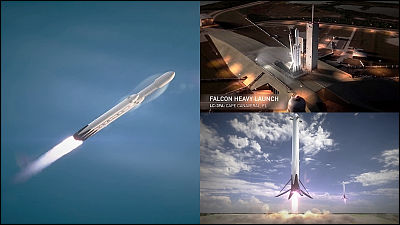Japanese space development company succeeds in photographing 'space debris' floating in Earth's orbit

'Space debris' or 'space junk' refers to man-made objects orbiting the Earth without any meaningful activity, such as artificial satellites that have outlived their useful life, parts of rockets used in launches, and fragments from
JAXA | CRD2 Phase I / ADRAS-J Update: Fly-Around Observation Images of Space Debris Released
https://global.jaxa.jp/press/2024/07/20240730-1_e.html

Spacecraft travels to metal object orbiting Earth, snaps stunning views | Mashable
https://mashable.com/article/space-junk-rocket-debris-footage
Space debris ranges from rocket and satellite parts several tens of meters in size to tools only a few centimeters in size that astronauts drop during their space activities. If the space debris is moving slowly, it will be pulled by the Earth's gravity and enter the atmosphere, but if it is fast enough to not be pulled by gravity, it will move at speeds of 3 to 8 km per second, and if it collides with a space station or other object, it will generate considerable destructive power and cause great damage. Even if it does enter the atmosphere, if it is large, it can reach the Earth's surface and become a dangerous falling object.
Astroscale, a Tokyo-based space development company, is the first and only private company in the world working on developing space debris removal services. On July 30, 2024, Astroscale announced that it had successfully photographed a discarded rocket moving in orbit with the words, 'Space debris, we are watching you from every angle!'
📢 NEWS: Hey space debris, we're watching you from every angle! 👀
— Astroscale (@astroscale_HQ) July 30, 2024
ADRAS-J has completed not one, but TWO fly-arounds of the upper stage, confirming the planned capture point has no major damage.
This milestone sets the stage for future removal and a sustainable space… pic.twitter.com/fHR9QXKPEq
The rocket was actually captured from directly above and directly below, and was successfully photographed from 'every angle.' After taking detailed photos of the entire rocket to determine its shape and size, it was confirmed that there was no major damage to the planned capture point.

The space debris released this time was photographed from a distance of about 50 meters by the 3-ton, 11-meter-long rocket that launched the Greenhouse Gas Observation Satellite ' IBUKI .' According to Mashable, an overseas media outlet that reported on the matter, it is quite difficult to get this close to space debris, which moves at 7 to 8 kilometers per second, with a spacecraft for photography. Astroscale explains the method of photography as 'demonstrating the effectiveness of the onboard collision avoidance system, which safely approaches uncooperative objects.'
The large-scale space debris removal mission is being carried out as part of the Japan Aerospace Exploration Agency's (JAXA) 'Commercial Space Debris Removal Demonstration Project.' In a press release announcing Astroscale's successful image capture, JAXA said, 'This success is a technical demonstration of the 'Fly-Around Observation Service', which aims to obtain high-quality images and sufficient data to clarify the movement, damage, and deterioration of debris in long-distance orbit, about which there is little information available worldwide. The safe completion of this mission by Astroscale's 'ADRAS-J' marks a steady step toward achieving two goals: acquiring debris removal technology to improve the worsening space debris problem, and strengthening the competitiveness of Japanese companies in the orbital services market.'
The footage was also released on JAXA's YouTube channel. The following was shot with a wide angle lens.
CRD2 Phase I: Sequential images of 'Fly-Around Observation(Wide)' 2024.7.15 - YouTube
The photo below was taken with a telephoto lens, at a closer magnification.
CRD2 Phase I: Sequential images of 'Fly-Around Observation(Tele)' 2024.7.15 - YouTube
This photoshoot is a reconnaissance mission, and the next step will be to capture the space debris with a robotic arm, lower it into low Earth orbit, and burn it up in the atmosphere. In the future, it is hoped that there will be almost no inert man-made objects that cannot navigate themselves in low Earth orbit (LEO) left.
Related Posts:







